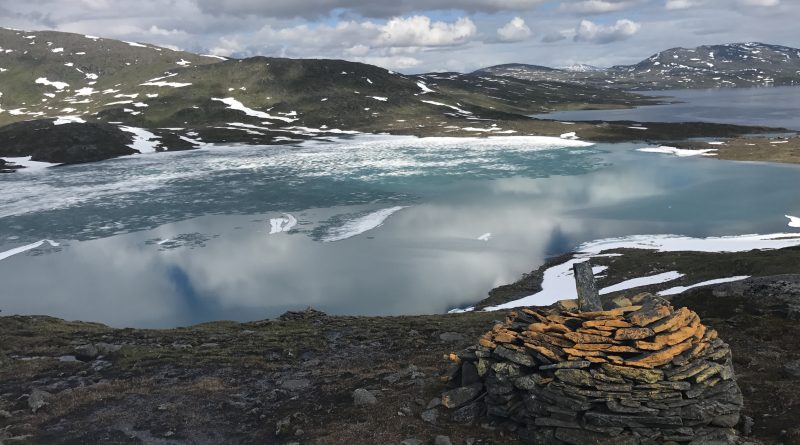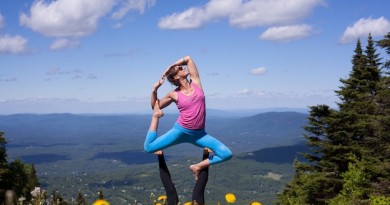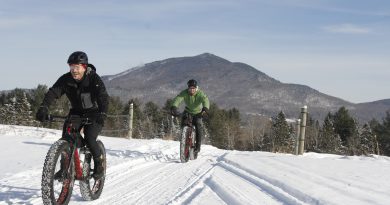Why Climate Change Matters To Athletes In Vermont
Vermont’s athletes take the front row in witnessing climate change.
On Sunday, January 7, 2018 Burlington set a record. For the first time in measured history, temperatures reached -20 degrees Fahrenheit on that day. For those of us who are used to sub-zero, that might not seem remarkable. What was shocking was that five days later, on Friday, January 12, it was 61 degrees.
Think about it: If that five-day, 81-degree temperature swing happened at any other time of year—say temperatures went from 20 degrees to 101, or 40 degrees to 121—this seismic change might have made headlines. Instead, Vermonters hunkered down, bundled up and shrugged off both extremes. Hey, it’s January, right?
Well, not all Vermonters. A group of endurance athletes, members of Andy Weinberg’s Endurance Society, had planned for January 6 to be the day to hike the Great Range. The trail is a one-day, 24-mile route across summits in the Adirondacks with an elevation gain of 10,000 feet. Backpacker Magazine has called the Great Range Trail “possibly the hardest classic dayhike in the East.”
Weinberg helped found the Spartan Death Race, has done hundreds of ultra races, even a quintuple Ironman triathlon. And he is experienced in wilderness travel. He assembled a hand-picked elite group, including Lance Parker, 22, the 2017 winner of the 888-kilometer ultra race, Infinitus that the Endurance Society hosts in Goshen.
The morning of the hike, temperatures were -15 degrees F. The forecast called for windchill temperatures to go as low as -60 degrees F.
Some people challenge themselves by climbing Everest, others by paddling class V rapids, others by freeclimbing. All are dangerous, no matter your skill level. This was a test of different limits. Was the group smart to set out? Smarter to turn around? Both are questions we don’t try to answer. We published this account because there are lessons here about both what to do (travel with a group, have safety plans, know your limits) and what not to do.
This issue also has the story of another hike that was impacted by a changing climate. Sterling College professor Pavel Cenkl completed his second “Climate Change Run” last August, running and camping along The Arctic Trail in Scandinavia. He too encountered weather that was extreme for the season: unusually high rivers and flooding, caused by melting snowfields late in the season.
More than just bizarre weather, these swings are symptoms of increasing climate instability. As Emma Cotton writes in “Running for Resilience,” her story about Cenkl’s run, Vermont’s climate is 1.3 degrees warmer than it was in 1960. Perhaps of greater import is the fact that winter temperatures are rising twice as fast as summer ones. At the current rate of climate change, scientists predict that in 50 years we will no longer see snow covering the ground for much of the winter.
As athletes, these changes will continue to impact our lives, perhaps long before the rest of the population notices. The incidence of Lyme disease, carried by ticks once vulnerable to Vermont’s cold winters, is four times what it was ten years ago. Each decade sees 7 fewer days of frozen lakes.
Cenkl hopes to inspire athletes and others to build a community of resilience around climate change.
In Vermont, we are already trying to adapt. In the last few years, Killington Resort has built out a mountain bike trail network nearly as impressive as its ski trails. Mount Snow is close to its goal of snowmaking on 100 percent of its trails and other ski resorts are following suit. Work is being done to clean up Lake Champlain where warming temperatures have accelerated the blue green algae blooms that have begun choking the shallow bays.
There are things we can do to help: commute by bike or carpool, use renewable power, turn down the theromstats, avoid using herbicides, pesticides and fertilizers on lawns. Most of us know these things, but as athletes who now watch the snow melt faster, the rivers run higher, and the temperatures swing faster and harder, we should be the first to sound the call to action.
Photo by Pavel Cenkl




Pingback: Vermont Sports Magazine, March/April 2018 - Vermont Sports Magazine